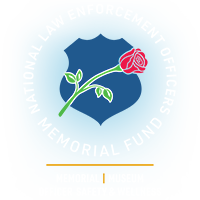Atlanta’s First African American Police Officers

In April 1948, the basement of Atlanta’s Butler Street YMCA took on a new role—a police precinct for the city’s first Black officers: Henry Hooks, Claude Dixon, Ernest H. Lyons, Robert McKibbens, Willard Strickland, Willie T. Elkins, Johnnie P. Jones, and John Sanders. They ranged in age from 21 to 32, and all but one were World War II veterans.

The first black police officers in Atlanta, Georgia.
FROM LEFT, FRONT: Henry Hooks, Claude Dixon, Ernest H. Lyons.
BACK: Robert McKibbens, Willard Strickland, Willie T. Elkins, Johnnie P. Jones, and John Sanders.
The eight officers held a unique role in law enforcement at the epicenter of the Jim Crow South. While these men were technically authority figures in the community, their powers as law enforcement officers were limited; they were not allowed to drive squad cars or patrol white neighborhoods or work from the main police precinct—hence the headquarters in the basement of the local YMCA. White officers falsely reported that their black colleagues were drinking on the job and repeatedly attempted to run them over while they crossed the street. At one point, a white officer had even offered members of the public a $200 bounty in return for killing a Black cop.

Atlanta’s First African American Police Officers. Seated R to L: Claude Dixon, Henry Hooks, Johnnie Jones, Ernest Lyons, Robert McKibbens, John Sanders, Willard Strickland and Willie Elkins. April 30th, 1948. Image source.
These officers not only faced hostility from their fellow officers, but also in their own neighborhood! Nearly a quarter of the Black community they were hired to serve resented the authority of these new officers, and another quarter only tolerated them “as long as [they] didn’t arrest them.” While some felt these officers were unwelcome, for others they were a beacon of hope. When they emerged for the first time from the Butler Street YMCA, they were greeted by a crowd of 400 citizens. Ernest Lyons, one of the officers, recalled later that an elderly woman had given them flowers, and as he and his fellow officers split into pairs to walk their first assigned beats, some of the cheerful spectators followed them — he said he felt like a god. Some of their first tasks involved cracking down on bootleggers bringing illegal whiskey into Black neighborhoods and handing out jaywalking tickets to drunk citizens who hit the wine houses in the morning and stumbled into the street by noon. But these officers also lived in the neighborhoods they patrolled and performed duties we would now think of as community policing: they partnered with local grocery stores to sell food to impoverished families at reduced rates and used pleasantries like “sir” or “ma’am” when addressing their neighbors help build trust and respect.
But for some of these officers, the constant harassment, Jim Crow restrictions, and hypocrisy experienced on the job were too much; nearly half of the original eight officers resigned within their first year on the job. But Atlanta attorney Larry Dingle, who was hired with the department in 1969, described that those who stayed showed admirable strength. They gave new officers advice, which always boiled down to the need to show respect to the citizens you protect over all else. Ernest Lyons, one of the original officers, was always remembered for telling younger officers that the pistol on their belt wasn’t the most important tool at their disposal, but rather it was the ability to communicate with the citizens on your beat and build trust, because the only way the community will truly allow the police to help is after they feel able to trust the police.
The African American officers of Atlanta were finally allowed to incorporate into the main precinct in 1953, but it wasn’t until 1962 that Black officers were formally given permission to arrest white perpetrators. It is amazing to think that these eight officers were barely given the authority to be regular beat cops, yet they were able to pioneer a path toward the just enforcement of laws in their own community. Today 58% of the police officers in Atlanta, Georgia, are Black.
Black Trailblazers in Blue is created in partnership between the National Law Enforcement Museum and the National Black Police Association to celebrate the triumphs of African American leaders in Law Enforcement.
Sources:
• https://www.atlantamagazine.com/great-reads/black-blue-atlantas-first-african-american-police-officers-vanguards-civil-rights-movement/
• https://www.npr.org/2016/09/23/495065415/darktown-imagines-what-it-was-like-for-atlantas-first-black-policemen
• http://historyatlanta.com/atlantas-first-black-police-officers/

